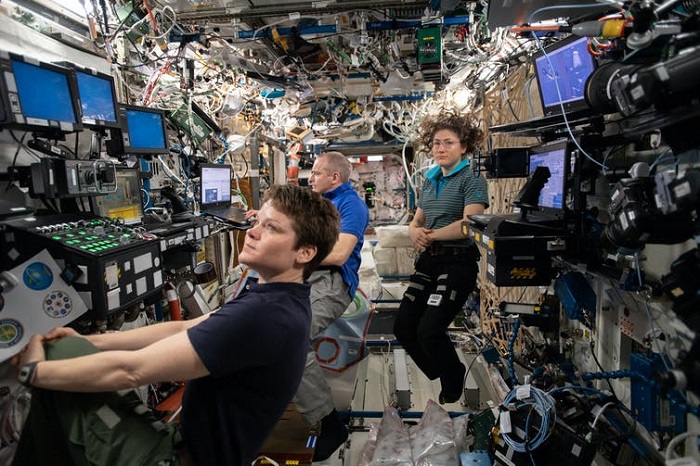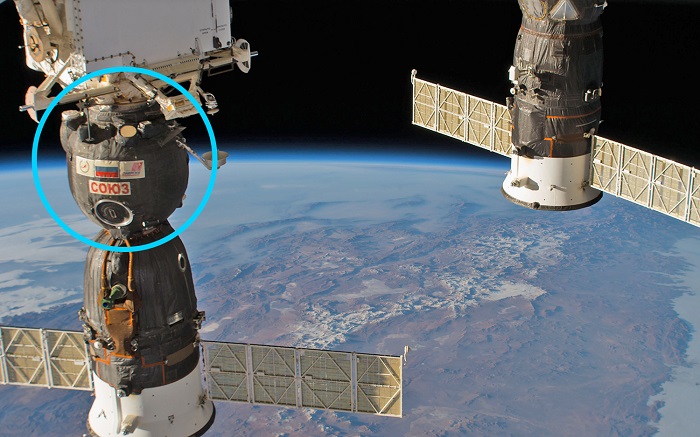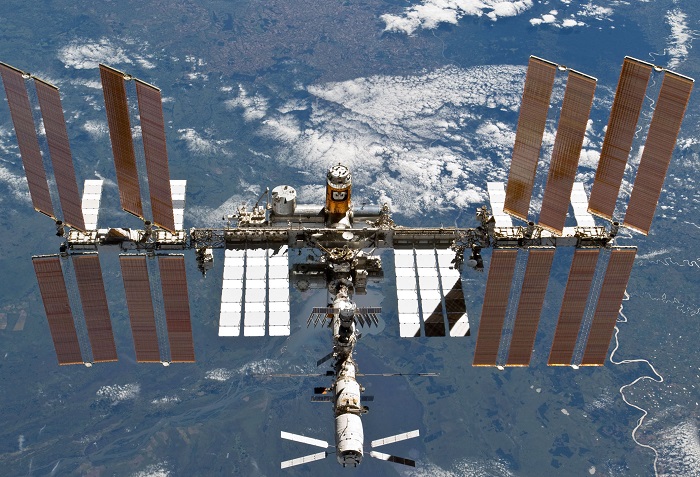A minor air leakage is reported on the International Space Station (ISS). NASA officials stressed that the leakage is minor and there is no threat to the crew on the Station. The crew members of the station’s current Expedition 63 are in no immediate danger and will spend the weekend in the orbiting laboratory’s Russian segment, inside the Zvezda service module, NASA officials said in an update, yesterday.
Astronauts can work in a shirtsleeve environment inside the station, but the orbiting lab is never completely airtight; a little bit of air always leaks over time, requiring routine repressurization from nitrogen and oxygen tanks that are sent up during cargo missions, NASA added in the update.
The leak was first spotted in September 2019, but it did not interfere with normal operations. Nor was the rate of air loss accelerating or high enough to cause alarm. NASA monitored this situation and focused on station priorities before addressing the leak. NASA spokesman Dan Huot said “Now that we have a relatively quiet period in the operations — spacewalks, vehicle traffic, additional crew members can all result in fluctuations — the crew will be shutting the hatches to every single module so the ground can monitor each module’s pressure to further isolate the source of the leak”.

“It’s the most effective means we have of finding the leak, as it is so small,” he added. While the leak rate is higher than usual, it is still within specifications for the station and poses no immediate danger to the crew, NASA officials emphasized. However, the officials refused to reveal the details regarding the rate of the present air leak.
While the leak rate is higher than usual, it is still within specifications for the station and poses no immediate danger to the crew, NASA officials emphasized. NASA astronaut Cassidy and his Russian crew-mate cosmonauts, Ivan Vagner and Anatoly Ivanishin, will stay in the Russian Zvezda service module from Friday night to Monday morning (August 21st to 24th).
The current leak investigation is not the first that space station team members have performed. And NASA officials emphasized that this leak is smaller than the one that astronauts encountered in 2018.

In August 2018, a small air leak was discovered in a Russian Soyuz spacecraft attached to the station, and Expedition 56 crew members eventually found an 0.08-inch-wide (2 millimeters) hole in the Soyuz hull. Russian officials investigated the cause of the leak, although as of September 2019 media reports indicated they were not prepared to publicly share what happened.
There have been other minor air leak events over the long history of the station, since its first modules were sent into space in 1998. For example, in November 2004, NASA astronaut Michael Foale found a small air leak that had been puzzling controllers for three weeks, according to a report from NBC. He found the leak at a main window at the U.S.-built Destiny laboratory, in a flexible cable called a vacuum jumper.
The cable normally was used to assist with equalizing air pressure in the window, which had several panes. But Foale spotted signs of a leak in the area where the hose connected with a steel harness at the window’s edge.




![The Top & Most Popular Seafood Bucket Restaurants in Dubai for you [Never Miss]](https://uae24x7.com/wp-content/uploads/2020/09/8-seafood-in-a-bucket-scaled-e1600739237403.jpg)
![Procedures for Renewing the Driving License in Abu Dhabi [3 Simple Steps]](https://uae24x7.com/wp-content/uploads/2020/07/Capture-9-e1595666454466.jpg)





